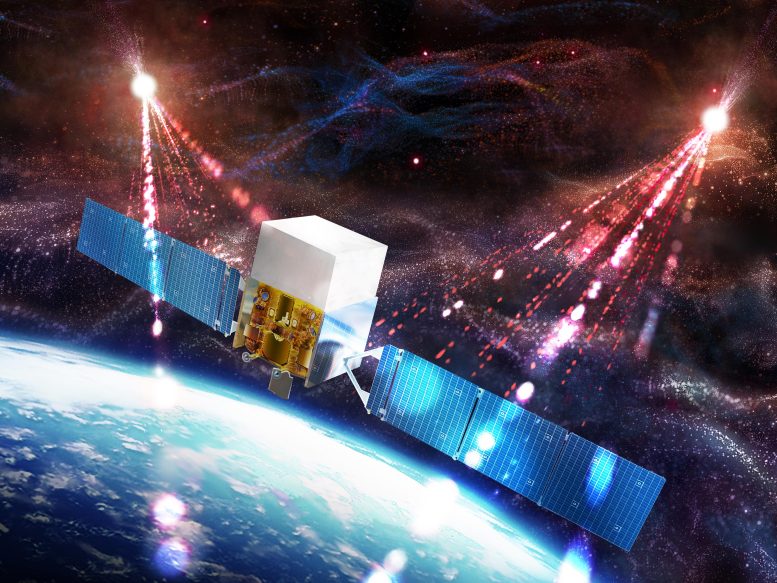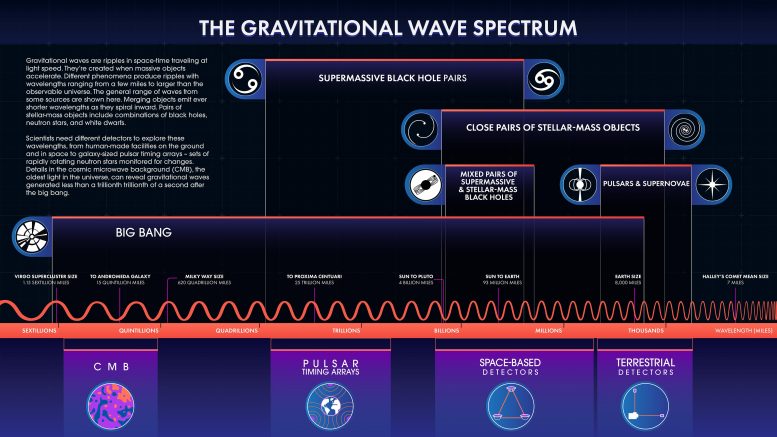NASA’s FERMI Searches for Ripples in Spacetime

Orbiting 500 km above the earth, the Fermi Large Area Telescope collects gamma rays from millisecond pulsars. As these high-energy photons travel across the Milky Way, they encounter a sea of low-frequency gravitational waves produced by pairs of supermassive black holes coalescing in the centers of merged galaxies. The spacetime ripples, with wavelengths extending beyond 100 trillion kilometers, cause each photon to arrive slightly earlier or slightly later than expected. Monitoring the gamma rays from many of these millisecond pulsars—an experiment known as a pulsar timing array — can reveal this telltale signature. Pulsar timing arrays have previously only used sensitive radio telescopes. Now, data from Fermi are enabling a gamma-ray based pulsar timing array and giving a new, clear view of these gravitational waves. Credit: © Daniëlle Futselaar/MPIfR (artsource.nl)
NASA’s FERMI Satellite Hunts for Extremely Long-wavelength Gravitational-Wave Signals
Coalescing supermassive black holes in the centers of merging galaxies fill the universe with low-frequency 
The length of a gravitational wave, or ripple in space-time, depends on its source, as shown in this infographic. Scientists need different kinds of detectors to study as much of the spectrum as possible. Credits: NASA’s Goddard Space Flight Center Conceptual Image Lab
A Sea of Gravitational Waves
At the heart of most galaxies—collections of hundreds of billions of stars like our own
This visualization shows gravitational waves emitted by two black holes (black spheres) of nearly equal mass as they spiral together and merge. Yellow structures near the black holes illustrate the strong curvature of space-time in the region. Orange ripples represent distortions of space-time caused by the rapidly orbiting masses. These distortions spread out and weaken, ultimately becoming gravitational waves (purple). The merger timescale depends on the masses of the black holes. For a system containing black holes with about 30 times the sun’s mass, similar to the one detected by NASA’s FERMI Searches for Ripples in Spacetime

